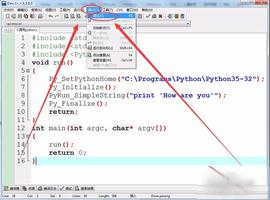python--函数的返回值、函数的参数

函数的返回值
特性:
- 减少重复代码
- 使程序变的可扩展
- 使程序变得易维护
函数名:命名规则和变量一样
函数的返回值:
return, 函数执行完毕. 不会执行后面逻辑
- 如果函数中不写return返回None
- 只写return 返回None
- return 返回值. 返回一个值
- return 值1, 值2,... 返回多个值. 调用方接收到的是元组
遇到return结束函数里的语句,下面的不会执行
没有return,返回None
def foo():print('foo')
foo # 表示是函数
foo() # 表示执行foo函数
def sayhi(): # 函数名print("Hello, I'm nobody!")
sayhi() # 调用函数
结果:
Hello, I'm nobody!
之前写的乘法是这样的
a, b = 5, 8c = a ** b
print(c)
改成函数之后是这样的
a, b = 5, 8# 改成用函数写
def calc(x, y):
res = x ** y
return res # 返回函数执行结果
c = calc(a, b) # 结果赋值给c变量
print(c)
函数和过程
函数有return 过程没有return
# 函数def func1():
print('in the func1')
return 0
# 过程
def func2():
print('in the func2')
x = func1()
y = func2()
print('from func1 return is %s' % x)
print('from func2 return is %s' % y)
结果:
in the func1in the func2
from func1 return is 0
from func2 return is None
import time # 导入time模块def logger(): # 定义了函数名为logger
time_format = '%Y-%m-%d %X' # 时间格式,Y年m月d日X时分秒
time_current = time.strftime(time_format) # time.strftime引用上面的时间格式
with open('ccc.txt', 'a+') as f:
f.write('%s end action\n' % time_current) # 将日期时间和end action写入到f里
def aaa():
print('in the test1')
logger()
def bbb():
print('in the test2')
logger()
def ccc():
print('in the test3')
logger()
aaa()
bbb()
ccc()
结果:
in the test1in the test2
in the test3
ccc.txt里写入
2020-06-15 22:17:37 end action
2020-06-15 22:17:37 end action
2020-06-15 22:17:37 end action
def test():print('in the test')
return 0
print('end test')
test()
结果:
in the test# 遇到return结束函数里的语句,下面的不会执行
def test():print('in the test')
return 0
x = test()
print(x)
结果:
in the test0
x=test()先执行函数里的内容,最后将函数里的返回值赋给x
def test():print('in the test')
return 1
print(test()) # 相当于x=test() print(x)
结果:
in the test1
没有 return 返回 None
def test():print('in the test')
x = test()
print(x)
结果:
in the testNone
def test1():print('in the test1')
def test2():
print('in the test2')
return 0
def test3():
print('in the test3')
return 1, 'hello', {'name': 'zouzou'}
return test2
x = test1()
y = test2()
z = test3()
print(x)
print(y)
print(z)
结果:
in the test1in the test2
in the test3
None
0
(1, 'hello', {'name': 'zouzou'})
先执行x,y,z,在打印他们的返回值
函数的参数
- 关键字参数不能写在位置参数前面(定义函数时)
- 参数组不能在位置参数和关键字参数前面
- 默认参数放在最后面
形参变量只有在被调用时才分配内存单元,在调用结束时,即刻释放所分配的内存单元。因此,形参只在函数内部有效。函数调用结束返回主调用函数后则不能再使用该形参变量
实参可以是常量、变量、表达式、函数等,无论实参是何种类型的量,在进行函数调用时,它们都必须有确定的值,以便把这些值传送给形参。因此应预先用赋值,输入等办法使参数获得确定值
def test(x, y): # x,y叫形参print(x)
print(y)
test(2, 4) # 位置参数,实参
def test(x, y): # x,y叫形参print(x)
print(y)
test(x=2, y=3) # 关键字参数
def test(x, y=3): # y为默认参数print(x)
print(y)
test(2)
参数组
*args接收的位置参数,转换成元组的形式,没有传参返回空元组
**kwargs接收的关键字参数,转换成字典的形式,没有传参返回空字典
def test(**kwargs): # 参数组,接收的参数不确定时用**print(kwargs)
test()
结果:
{}def test(*args): # 参数组,接收的参数不确定时用*print(args)
test()
结果:
()
def test(x, *args):print(x)
print(args) # 打印的是一个元组
test(2, 4, 6, 8)
test(*[6, 8, 9, 45, 5]) # args=tuple[6,8,9,45,5]
结果:
2(4, 6, 8)
6
(8, 9, 45, 5)
def test(**kwargs): # 参数组,接收的参数不确定时用*print(kwargs) # 打印的是一个字典
print(kwargs['name'])
print(kwargs['age'])
print(kwargs['job'])
test(name='zou', age=18, job='IT') # 接收的是关键字参数
结果:
{'name': 'zou', 'age': 18, 'job': 'IT'}zou
18
IT
以上是 python--函数的返回值、函数的参数 的全部内容, 来源链接: utcz.com/z/388925.html



